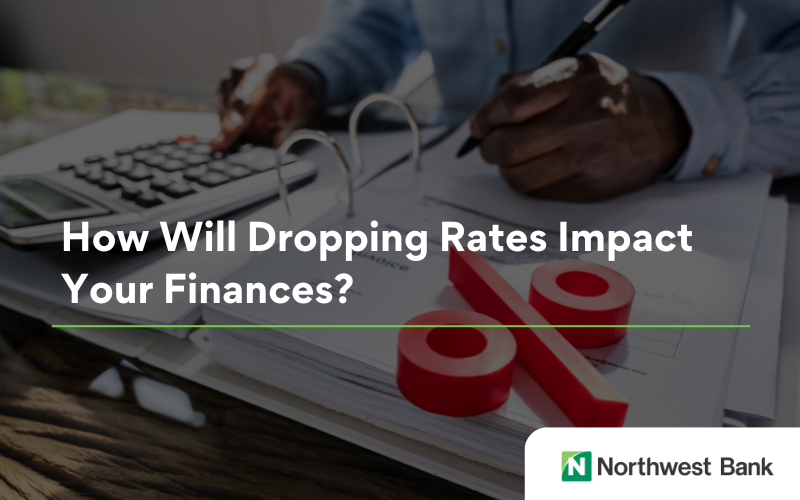The Three Phases of the Business Life Cycle — and How to Financially Prepare for Each One
Business planning is critical at every stage of your business, helping drive sustainable practices that set you up for long-term growth.
However, success — and how you measure it — can look different at various stages of your business. By understanding the business life cycle, you can align your goals and tailor your financial planning for the unique needs of each stage.
We talked to Jonathan Smith, Head of SBA Lending at Northwest, about what entrepreneurs need to consider at each stage of the business life cycle — and how to reach your personal and professional goals along the way.
Phase 1: Fueling growth
Watching your business grow is one of the most rewarding experiences for entrepreneurs and smart financial planning can set your business up for success.
During this pivotal phase of your business, it’s important to keep the financial fundamentals top of mind to secure an SBA loan. “Whatever your goal is — whether it’s acquiring another company, buying equipment, opening a new location or something else — lenders will look at the financial health of your business and your plan for the future,” Smith says. “We want to see healthy cash flow that demonstrates to us that you can pay the loan back.”
Lenders also want to see a detailed business plan that outlines how you intend to use the money, Smith explains. “This planning helps ensure that you’re applying for the appropriate amount of funding,” he says. “The last thing you want to do is run out of money because you applied for $1 million when you actually need $1.4 million to realize your vision.”
If you’re not sure where to start, reach out to your financial institution for help. A small business banker can answer questions, help you analyze your cash flow and offer personalized advice to help set your financing application up for success.
Phase 2: Navigating maturity
Unfortunately, explosive growth typically doesn’t last forever. Businesses enter maturity when sales remain stagnant or decline slightly for a few years in a row.
Businesses reach maturity for a number of reasons, Smith explains. For some entrepreneurs, it’s a natural consequence of nearing retirement and focusing on life’s other priorities. For others, it can stem from a gap in expertise, especially for businesses that scaled from one-person operations to multimillion dollar enterprises.
Successfully navigating maturity starts with an unflinching look at why sales have stalled, Smith advises. “Most businesses still have room to grow — and it’s all about problem-solving to remove those bottlenecks to growth,” he says.
Here are some of the most common bottlenecks entrepreneurs face as they reach maturity, as well as solutions to help address them:
A trusted financial partner can serve as a sounding board as you identify challenges and map out your next steps, as well as connect you to resources and expertise, such as local business organizations or consultants, to help. And, once you have a plan in place, the bank can connect you to the financial solutions you need to make your vision a reality.
Phase 3: Planning your exit
Every entrepreneur needs an exit strategy. Whether you’re planning to sell the business, pass it on to a family member or trusted employee or shutter operations, you’ll need to develop a financial plan to reach your goal.
Mapping out your exit starts with a deep dive into your financials, says Smith, and addressing any issues that may undermine the business’ value.
This may involve rethinking your tax strategy, Smith explains. “If you’ve been making a lot of deductions to maximize tax efficiency, it can make your business’ income look lower than it truly is, which might negatively impact the value of the business.”
Working with an accountant in the years leading up to your exit gives you time to adjust your tax strategy, so you can make your business as attractive as possible to potential buyers.
|
Pro tip: Use the last few years running your business to boost its resiliency, Smith advises. Relying too heavily on one account for your annual revenue, for instance, may make your business appear risky to investors, lowering its value. But you can maximize the selling price by focusing on achieving or maintaining a healthy cash flow and cultivating a diversified customer base. |
Your bank can help you navigate other exit strategies as well, Smith says. “A lot of the businesses we work with want to transfer the business to a trusted business partner, who may not have the cash on hand to pay for the business up front,” he says. “We can walk you through other options, such as seller notes, that allow the new owner to pay for the business over time.”
Finally, a trusted financial partner can help you manage your personal estate, helping to ensure that you can use the proceeds from the sale to reach your goals after your exit.
Get the support you need throughout the life cycle of your business
Making a plan for your business isn’t just a tactical exercise, it’s also an emotional one. “For many entrepreneurs, we’re talking about your life’s work, and moving toward an exit is almost never easy,” says Smith. “Our job as small business bankers is to be there for you each step of the way, so you have the support to understand your options and make the choice that’s best for you.”
Northwest Bank’s dedicated team of small business banking experts is here to help. To learn more about how we can help you achieve your vision, speak with a member of our team today.



